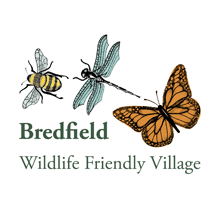Where butterflies are widely loved and welcomed, moths seem to share our affections much less. This makes little sense scientifically, because they both belong to the same order of insects – Lepidoptera. Perhaps they are not loved so much because they are (largely) denizens of the night; or perhaps because we fear they are going to eat our clothes. There are around 2,500 species of moth in Britain, and only two species (that you are likely to meet) produce lava that will eat holes in your clothes. Some moths are important pollinators in their own right and many supplement the pollination services provided by other insects. They take over the night shift.
Of all the types of insects that will visit your garden, the number of species of moth will be larger than the number of species of beetles, bugs, flies, bees and wasps, or butterflies. It wouldn’t be unusual, over the span of a year, for around 200 species of moth to visit your garden while you are sleeping. Some species of moths do fly during the day (tiny, metallic Long-horn Moths for example) and others are easily disturbed from their resting places (e.g. Silver Y, Yellow Shell and Shaded Broad-bar). When you walk over your lawn, you may disturb small, pale grass moths, which fly up and then just seem to disappear. They vanish because they settle with their wings closed-up and they blend in perfectly with the grasses. A few types of moth – often the larger ones – can just turn up anywhere, at any time. The large Convolvulus Hawk-moth is often reported roosting amongst linen on washing lines. This year, two residents of Bredfield reported Leopard Moths sat on the ground beside a path. A nationally scarce moth – Orange Conch (Commophila aeneana) – was recently discovered amongst the long grasses in Bredfield Jubilee Meadow and Orchard, whilst our annual Wildflower Walk was taking place.
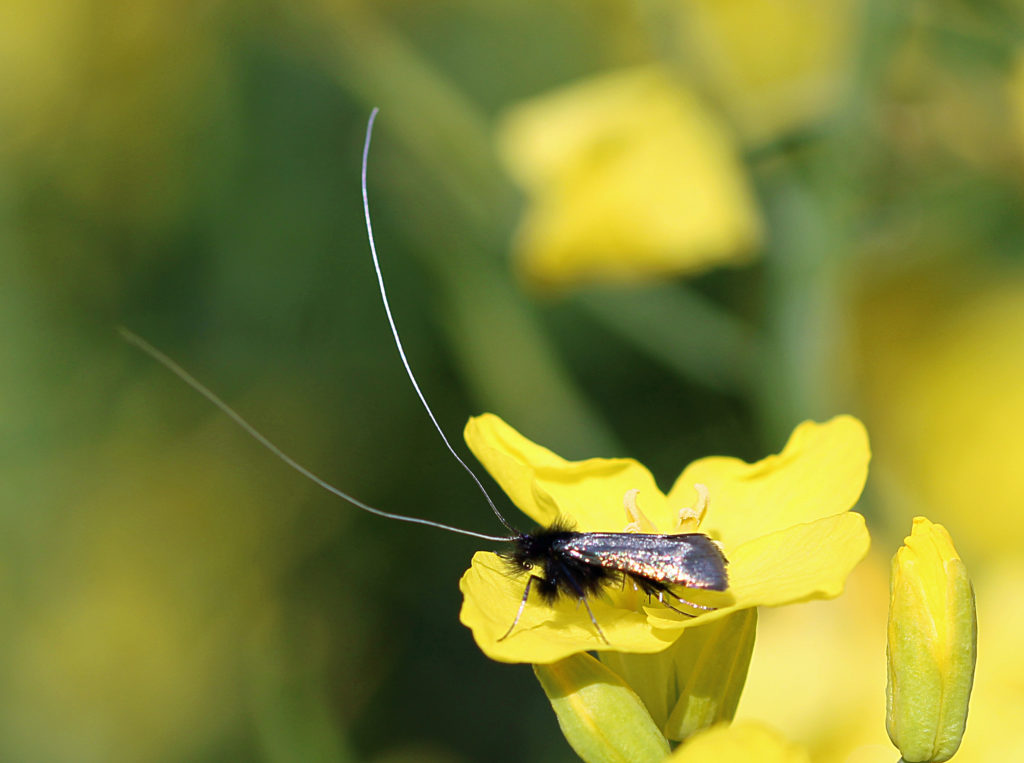
A ‘Long-horn Moth’ – Adela reumuella 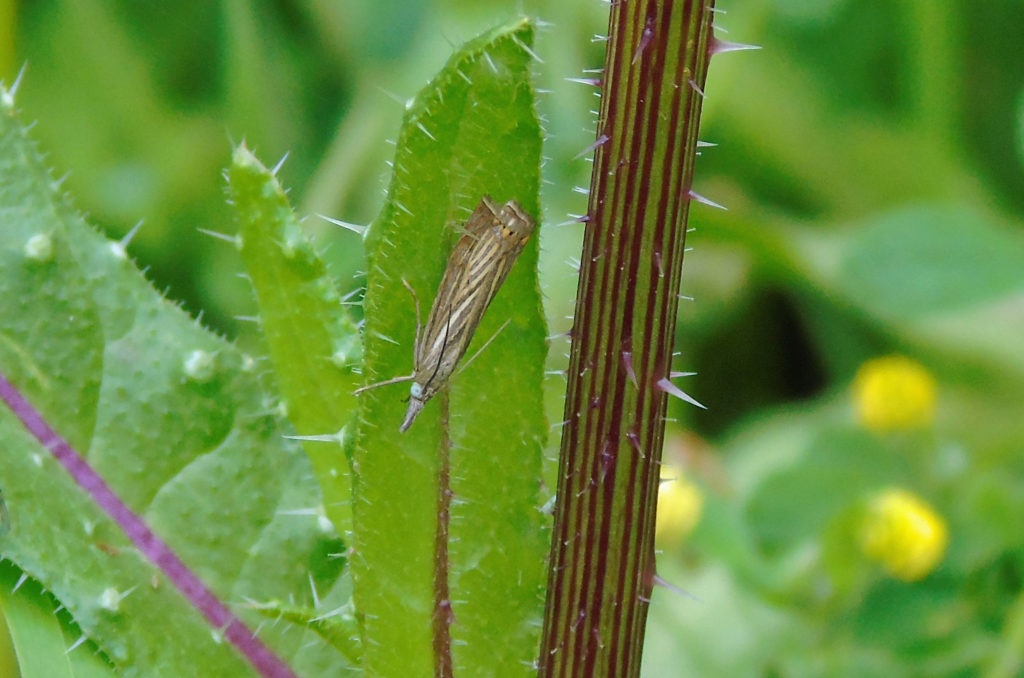
A ‘Grass Moth’ – Chrysoteuchia culmella
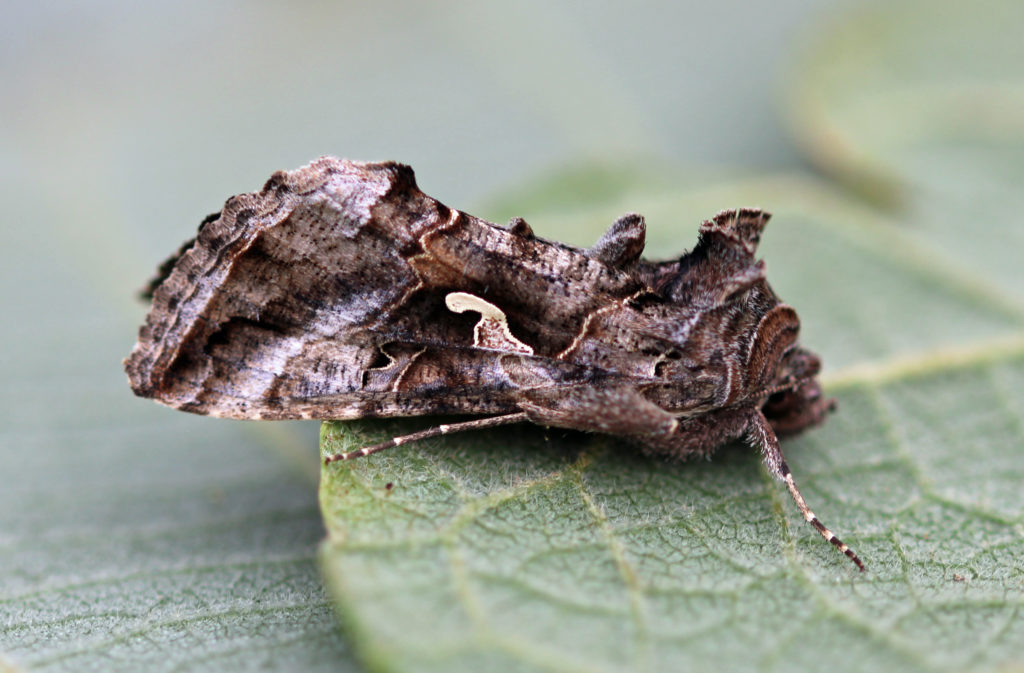
Silver Y 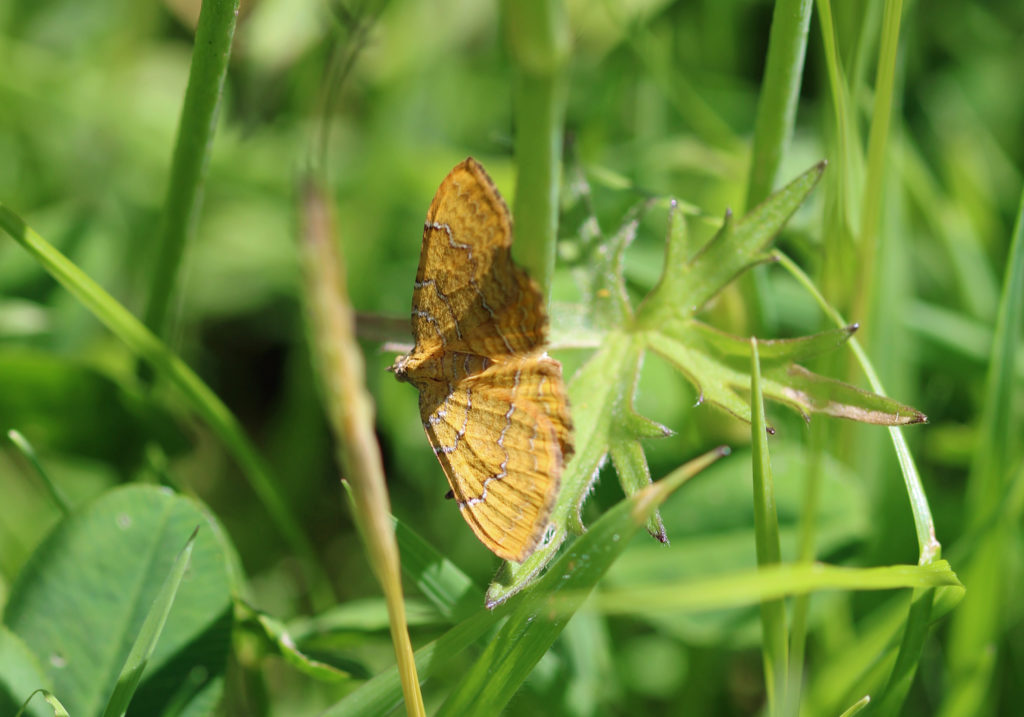
Yellow Shell
Several moths will come to lighted windows at night, or you might find them resting on a wall next to a light. It will often be difficult to tell what species of moth they are, unless you are willing to venture out with a camera and try to photograph them. However, some types of moths are quite distinctive in shape and you should be able to tell what they are. For example, a small pale moth that takes the shape of a crucifix, will be a plume moth (probably Common Plume Moth, but there are others). On hot summer nights, if windows are open, moths can fly right into you house. On the occasion of a Quiz Night, on a warm summer evening in Bredfield Village Hall, a delightful Barred Sallow flew in and landed on the table of a quiz team! A few more experiences like that might serve to stimulate greater interest in our moths..
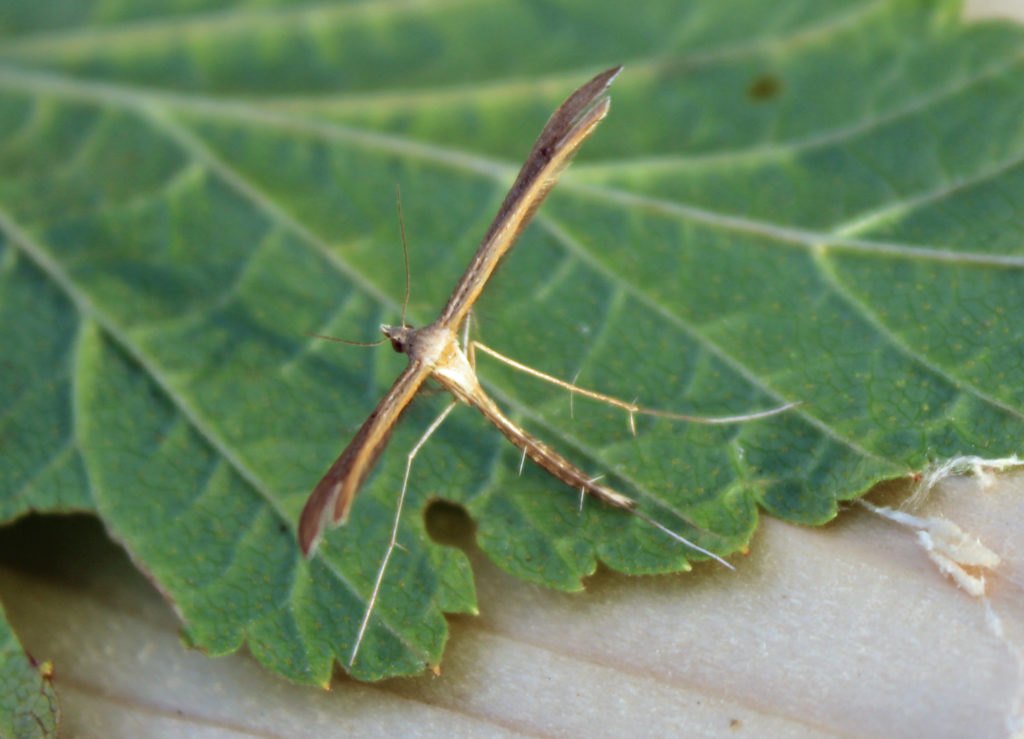
Common Plume 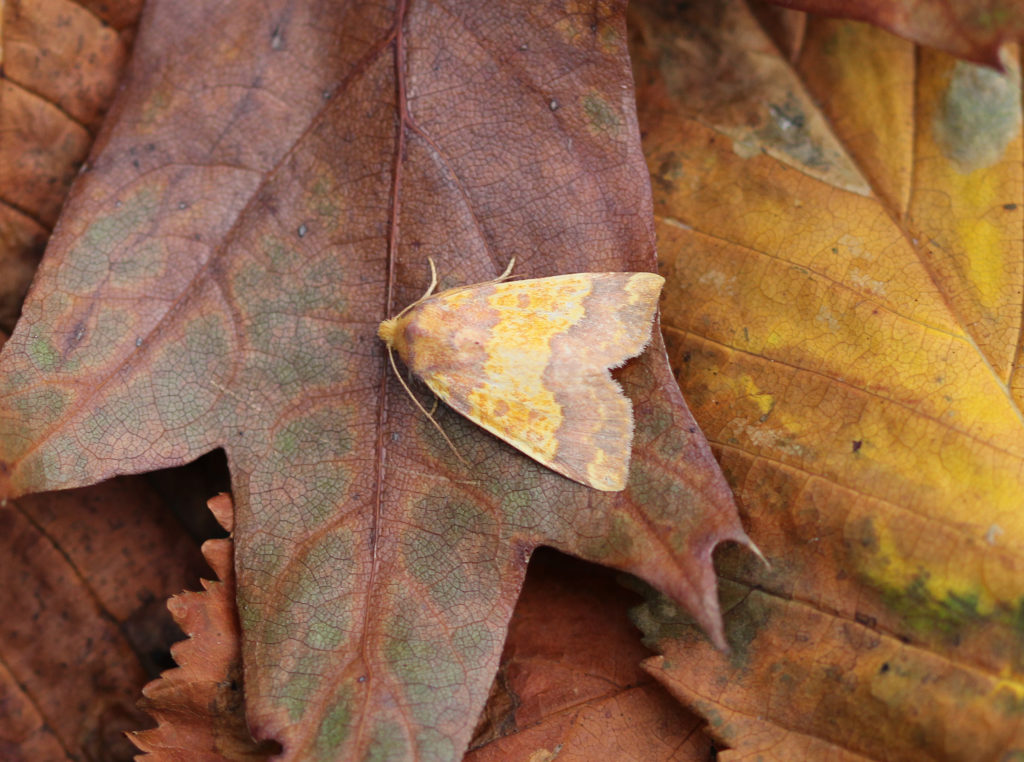
Barred Sallow
Most of our knowledge of moths comes not from the above sources, but from trapping them. ‘Trapping’ sounds cruel, but moth traps do no harm to the moths. Moth traps come in various designs and sizes, but the basic principle is the same: they utilize a strong light which attracts the moths and funnels them into a large container which contains egg boxes. The egg boxes have depressions and nooks (like the bark of a tree perhaps) where the moths settle and feel safe. In the morning, when (hopefully) the moths are all resting for the day, the egg boxes can be examined: with notes made and photographs taken. When done, all the moths can be released to fly away and disappear amongst surrounding vegetation. Moth trapping might be considered as just a ‘hobby’, but most people submit their notes and records and are, thereby, participating in important ‘citizen science’. Conservation of wildlife rests upon scientific information (for example, which species are declining in number, and where). Without this amateur ‘citizen science’ of garden moth traps, our knowledge of moths would be significantly poorer. At least two people in Bredfield run moth traps in their gardens, and the total number of species they have found is in excess of 320.
Moths come in all shapes, sizes and patterns. Some have wing-patterns that clearly serve as disguise (Tree-lichen Moth, for example, has a name that signifies its disguise) and others can take on cryptic shapes (Buff-tip moth looks just like a Birch twig, and Chinese Character passes itself off as bird poo quite successfully!). Other moths are rather showier. This showiness might be meant to frighten potential predators, and the presence of eye-shapes on the wing is one strategy of fright (see Emperor Moth and Eyed Hawk-moth). Some moths are quite large (Privet Hawk-moth seems as big as a mouse), where others are very small and you could easily miss seeing them (e.g. the diminutive Diamond-back). Over half of the species of moths in Britain are classified as ‘micro moths’ and it takes some experience to identify these, never mind seeing them. However, a few of these ‘micros’ are easy to see and delightful in appearance. If you grow herbs in your garden, the chances are you’ve had a ‘Mint Moth’ (Pyrausta aurate) visit.
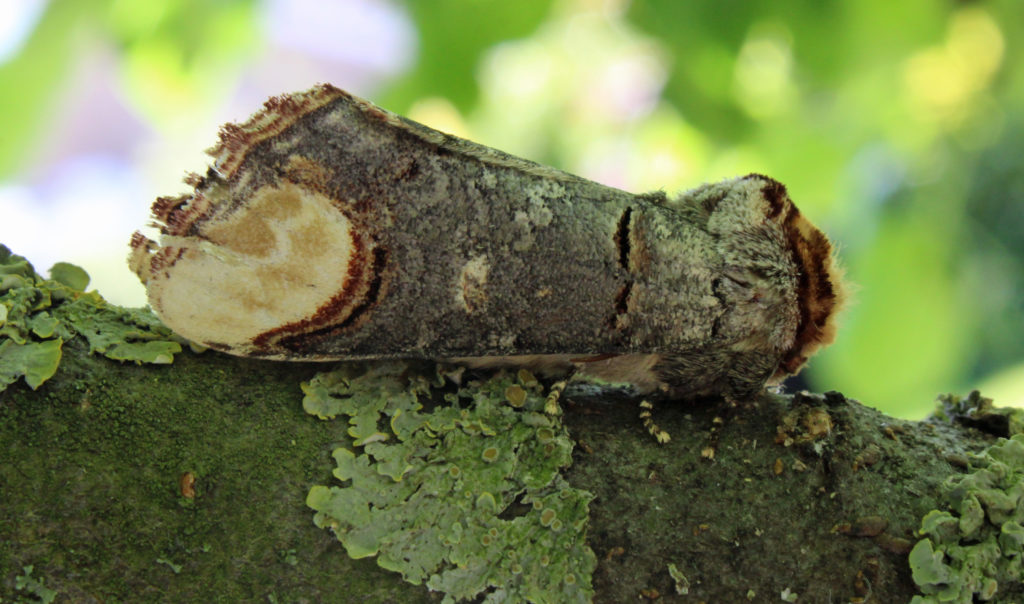
Buff-tip 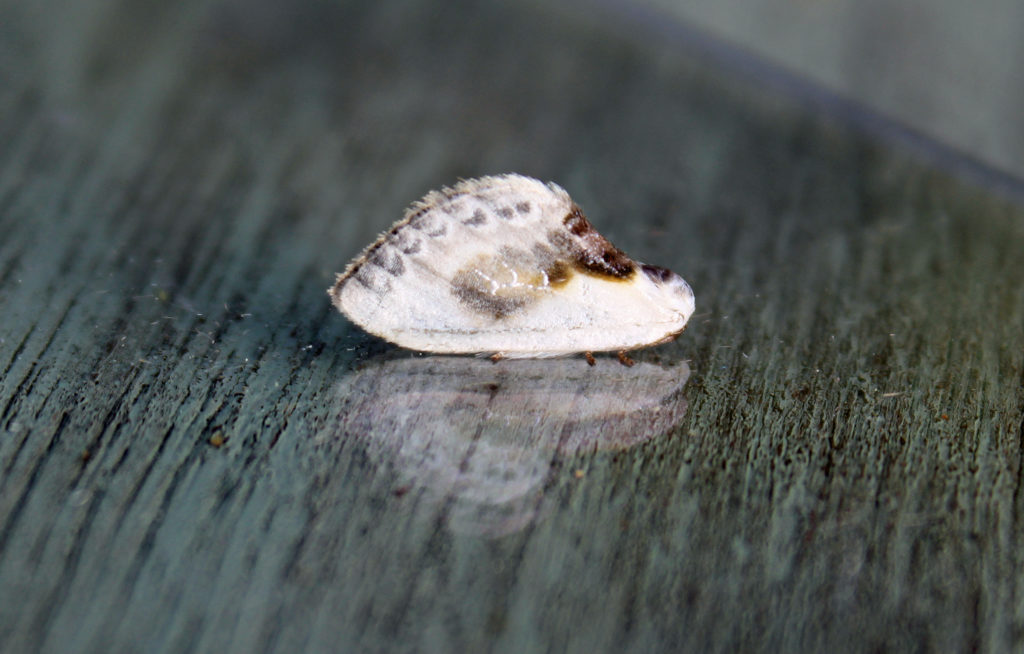
Chinese Character
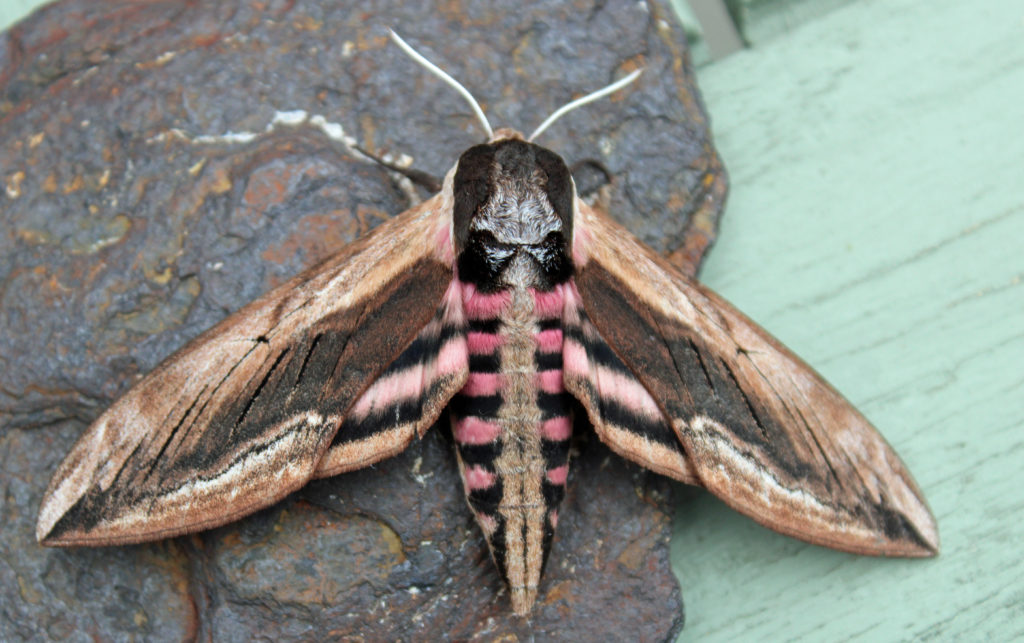
Privet Hawk-moth 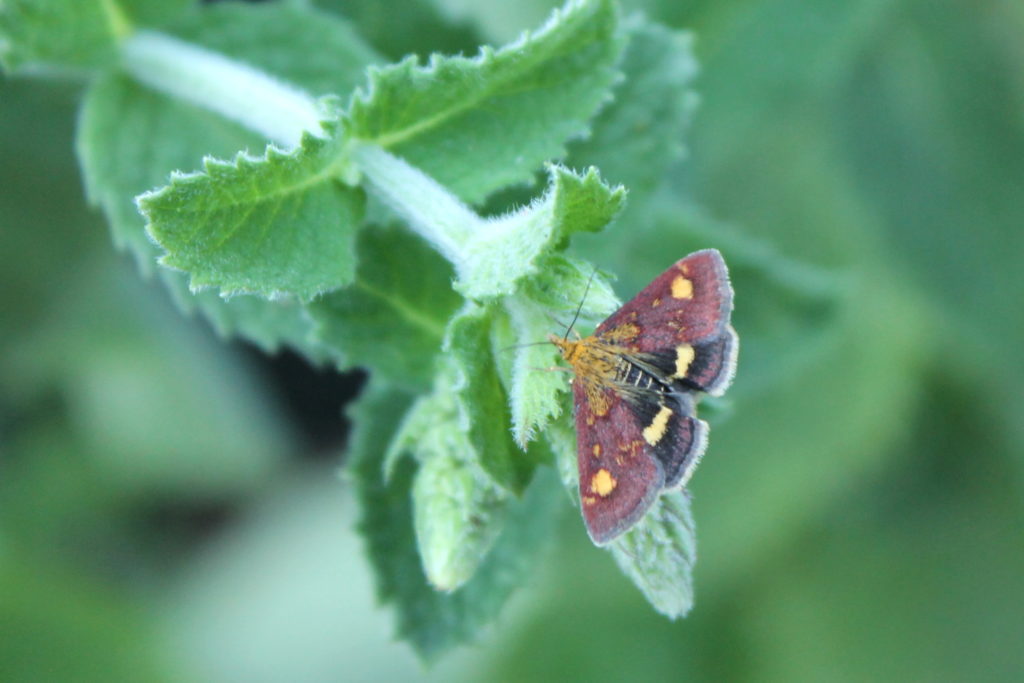
Mint Moth
Moths are around the year through, though the main abundance of them is to be found April though to October. On still, warm, humid nights, they are very active. On cold, wet, breezy nights, you may struggle to find any. There are still moths to be found flying in the winter. One of these is aptly named Winter Moth, and another is the also aptly called December Moth, which looks to be ‘dressed’ for winter in its furry Hagrid-type coat. Why would any self-respecting moth wish to flying around in the depth of winter? Well, there is some evolutionary survival strategy at work here: no bats will be flying to eat them.
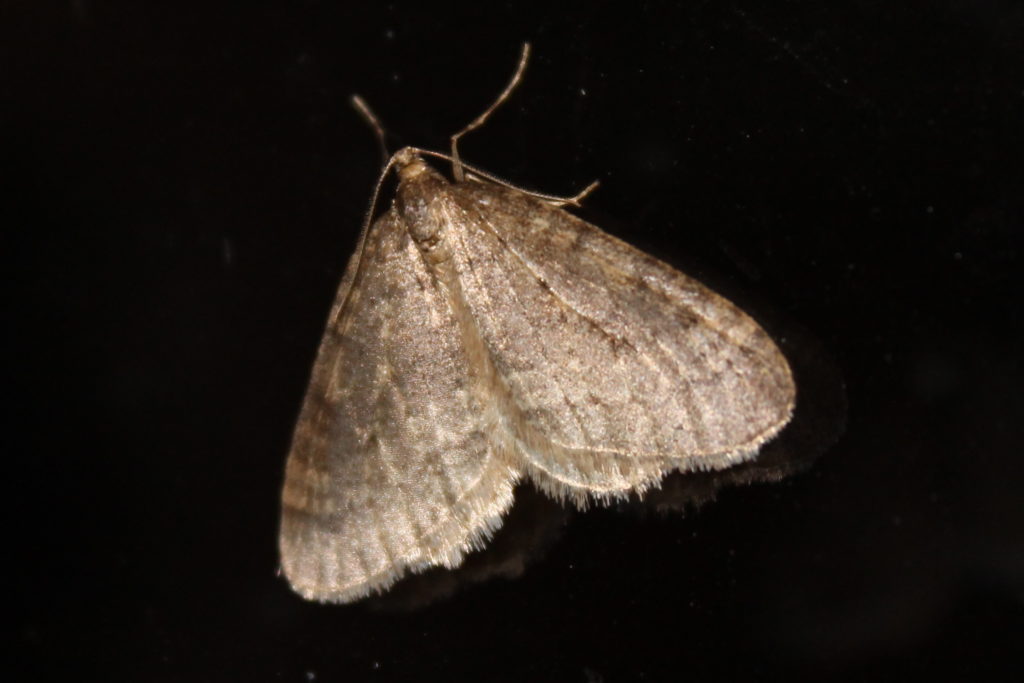
Winter Moth 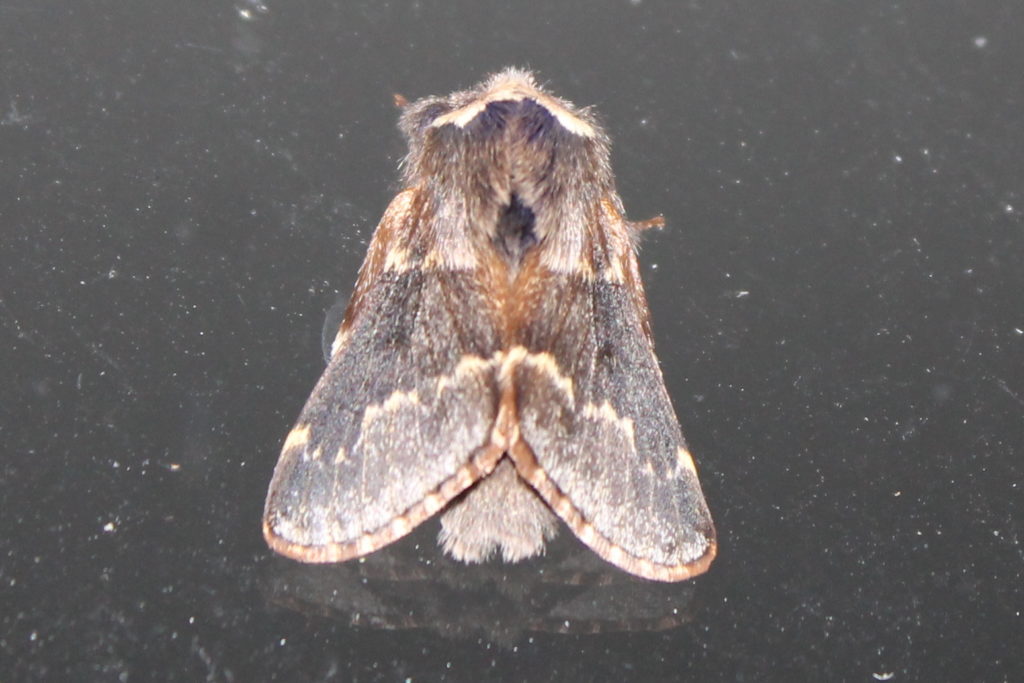
December Moth
Though butterflies are often celebrated for their beauty, there are certain moths that can compete in the good-looks stakes. Let’s see some of these, all photographed in Bredfield:
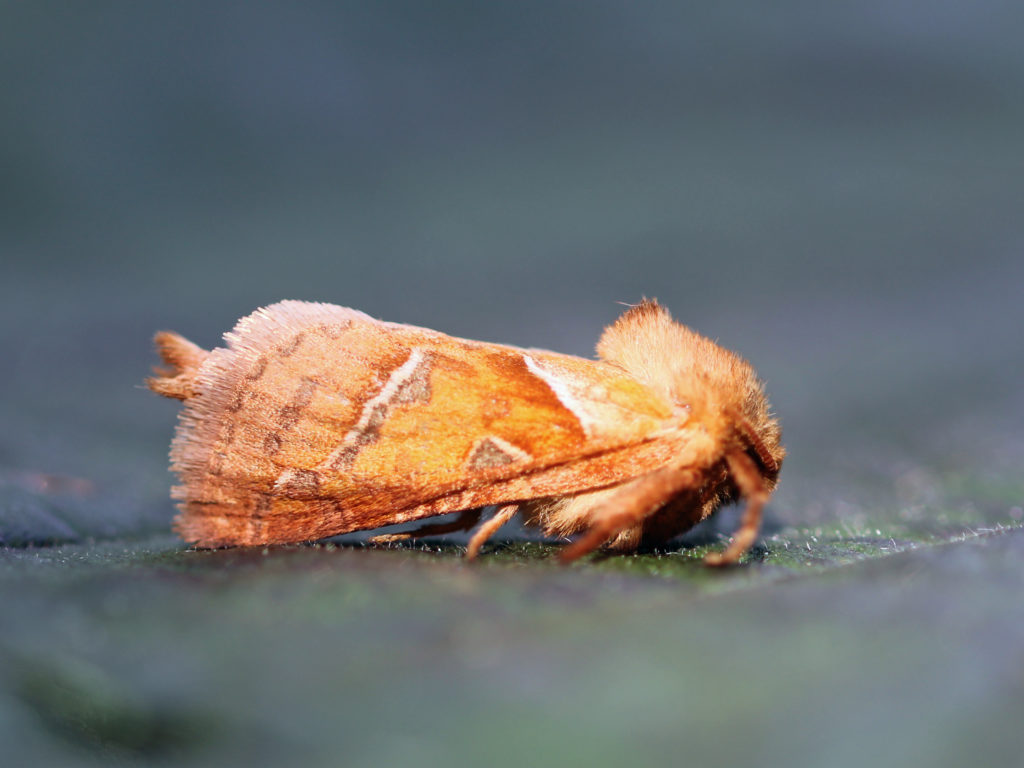
Orange Swift 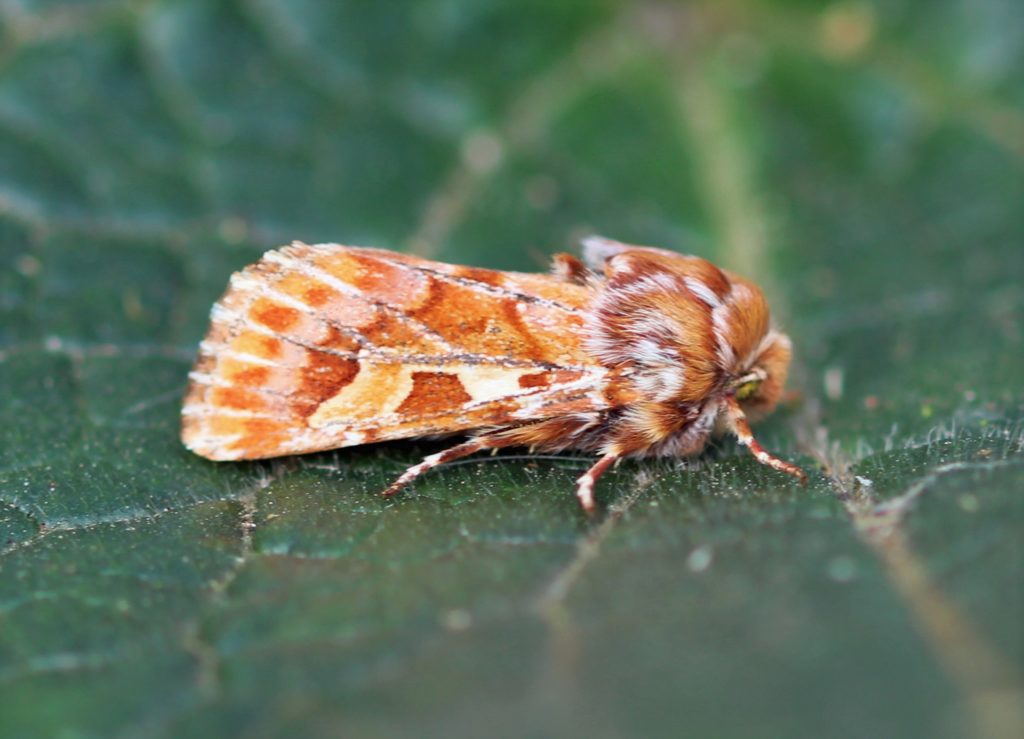
Pine Beauty
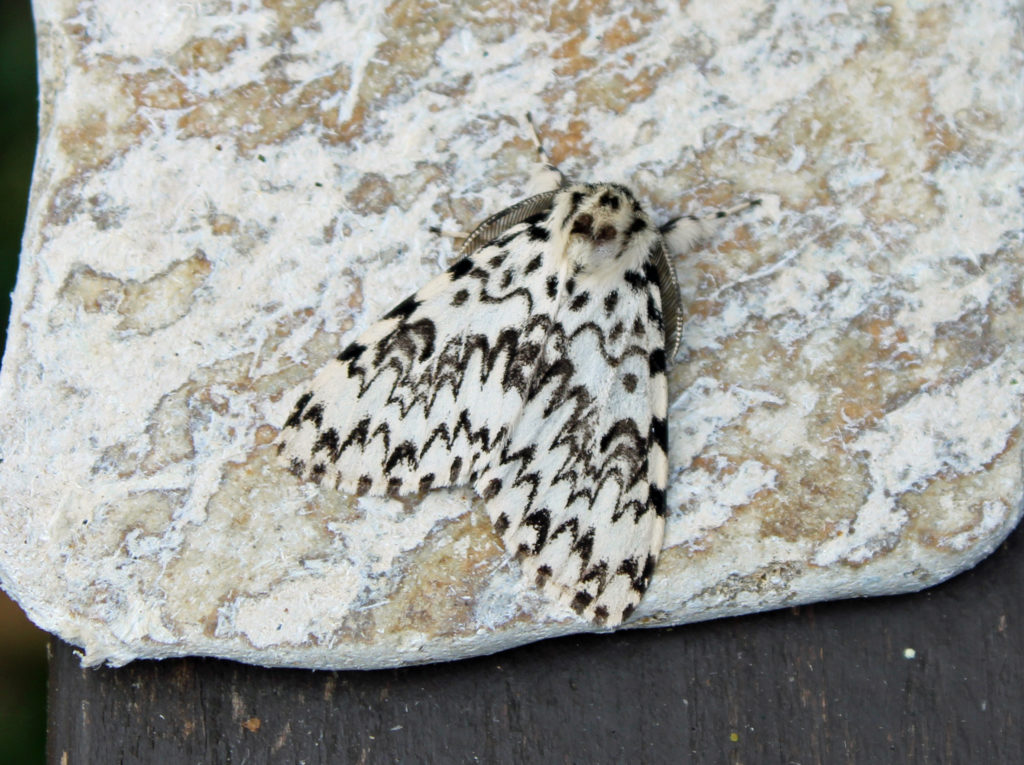
Black Arches 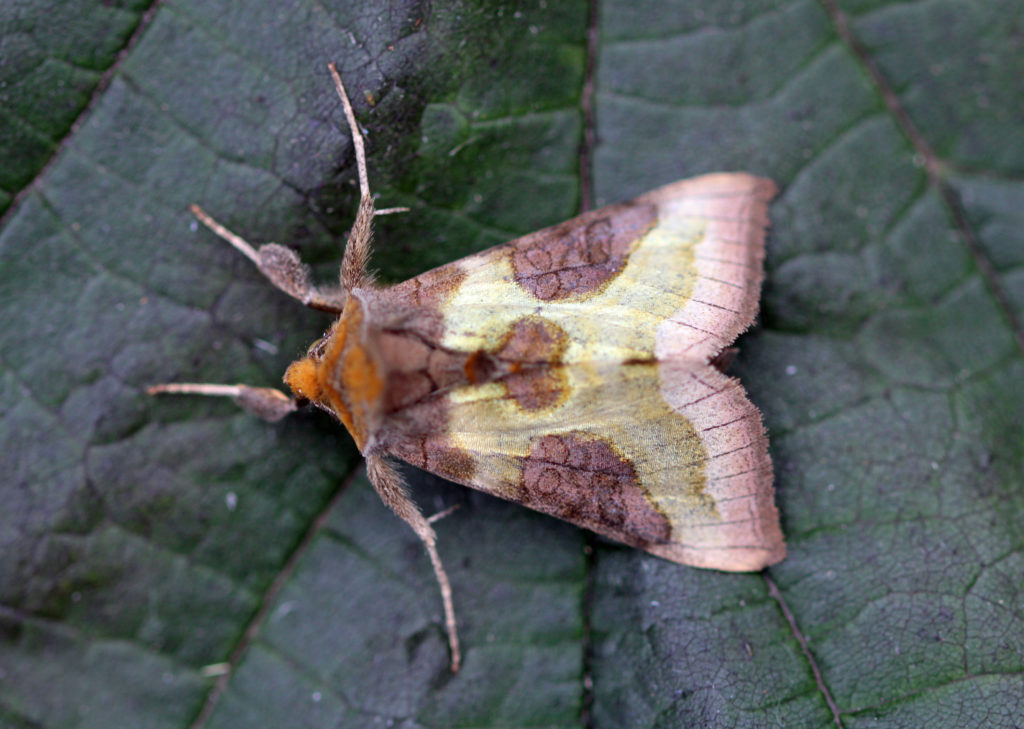
Burnished Brass
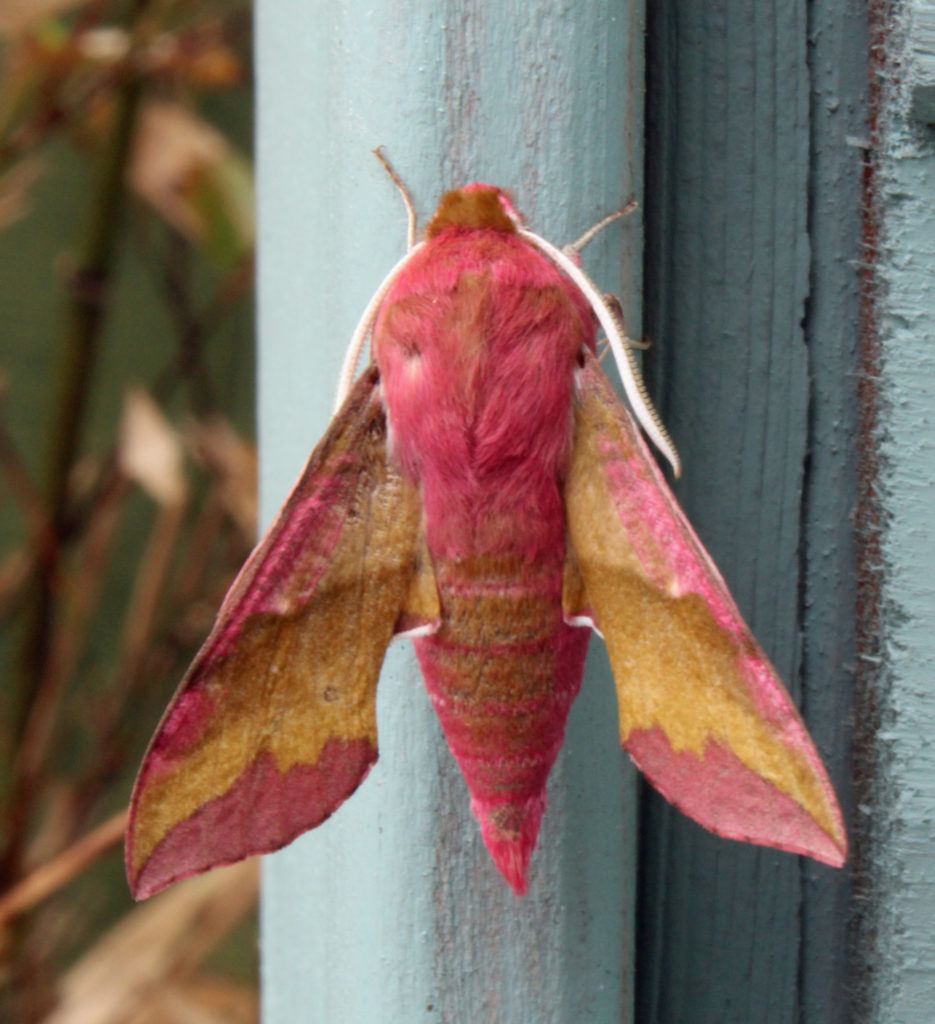
Small Elephant Hawk-moth 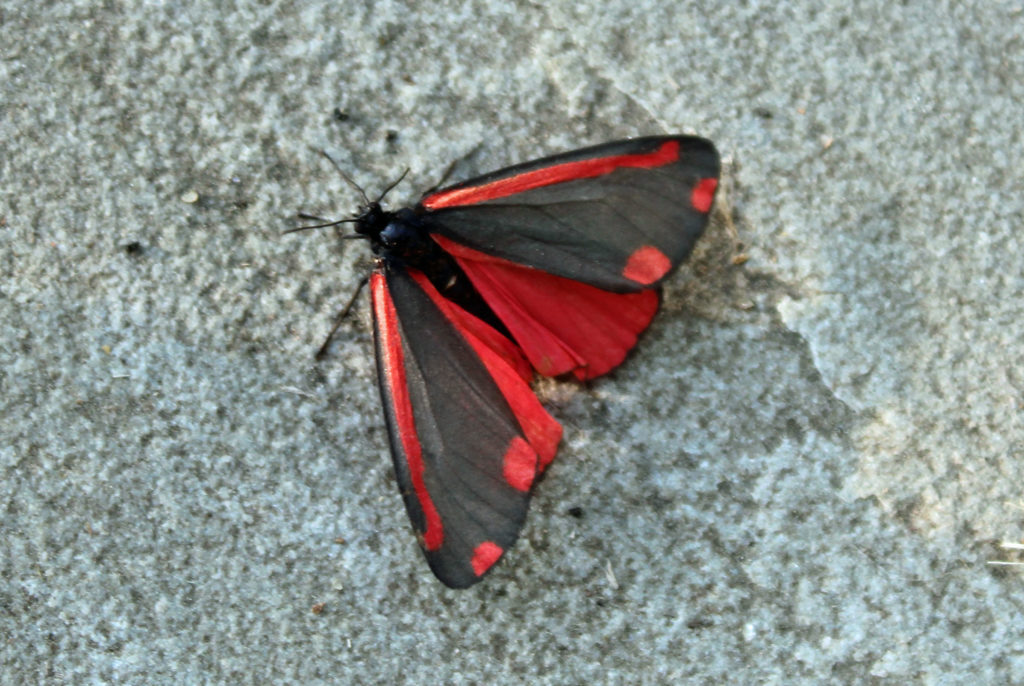
Cinnabar Moth
To find out more about moths and their identification, you’ll find a number of helpful books (most especially the field guides in the Bloomsbury Wildlife Guides series). However, a cheaper and easier way is to make use of the Suffolk Moths website. Go to the site, click on ‘Arrivals’, then ‘Flying Tonight’ and you’ll find a list (complete with thumbnail pictures) of what you are likely to see. With so many moth species illustrated in field guides, the benefit of this website is that it already narrows down the field by region, time of year, and degree of commonality.
Bredfield village provides a relatively good range of habitats for moths. It needs to continue to do so because, more generally in the UK, moths populations are plummeting. Not only are they victims of the impact of that trio of adverse effects – loss of habitat, chemical pollution and climate change – they also suffer from the impact of light pollution at night which, amongst other things, tips the balance in favour of moth predators. Fortunately, in Bredfield we experience very little light pollution. We can build upon this advantage and make Bredfield a haven for moths.
